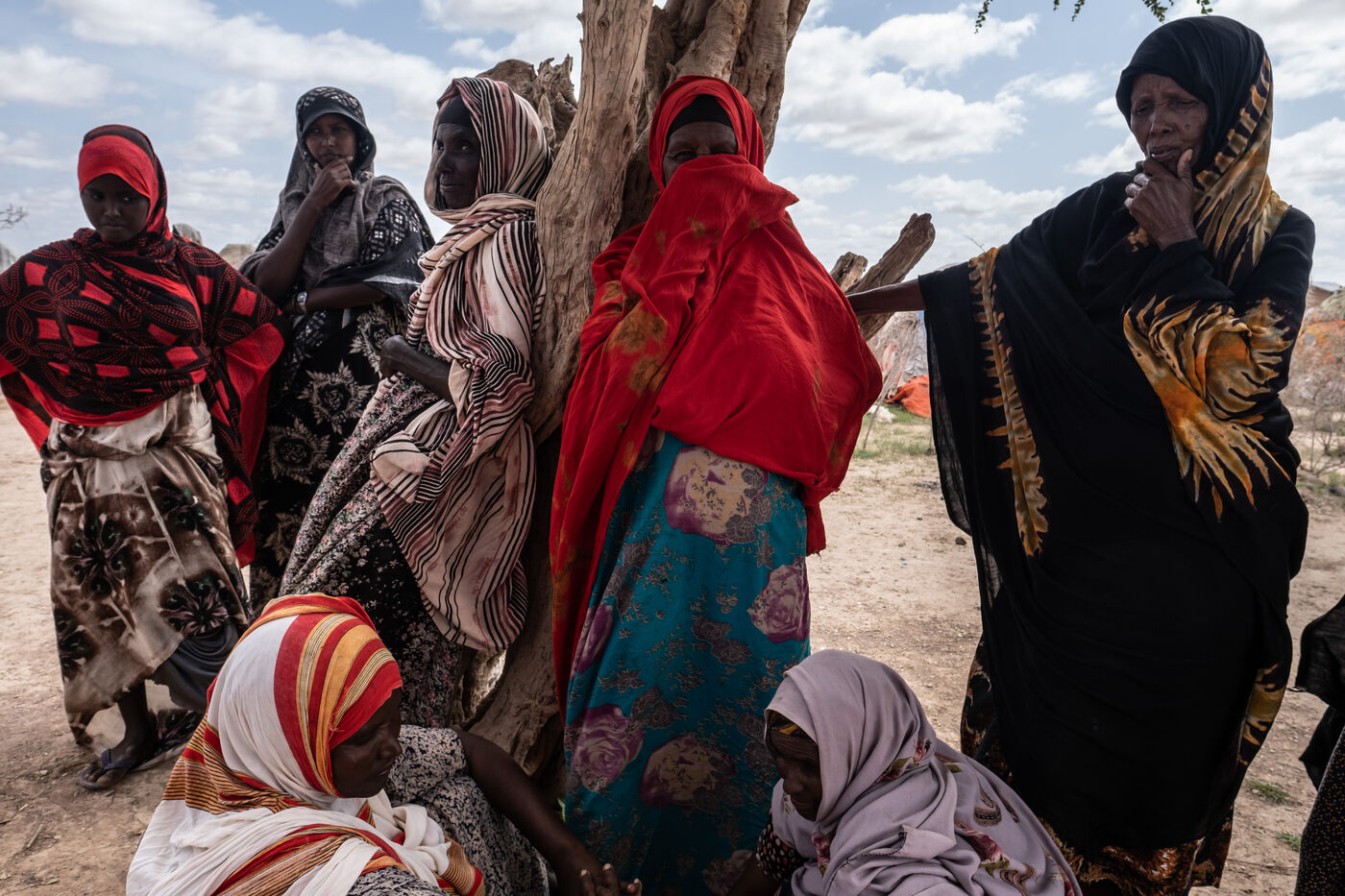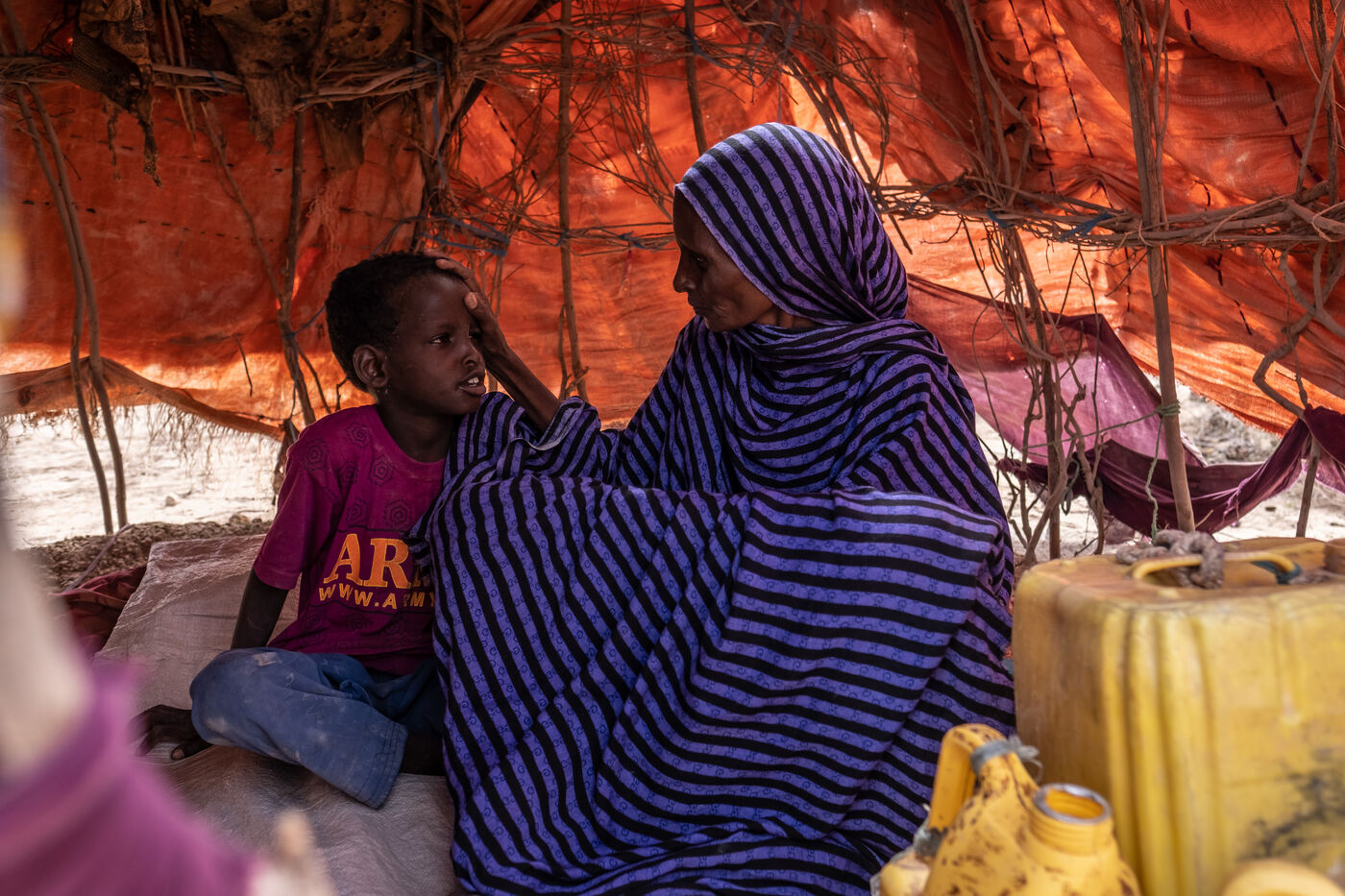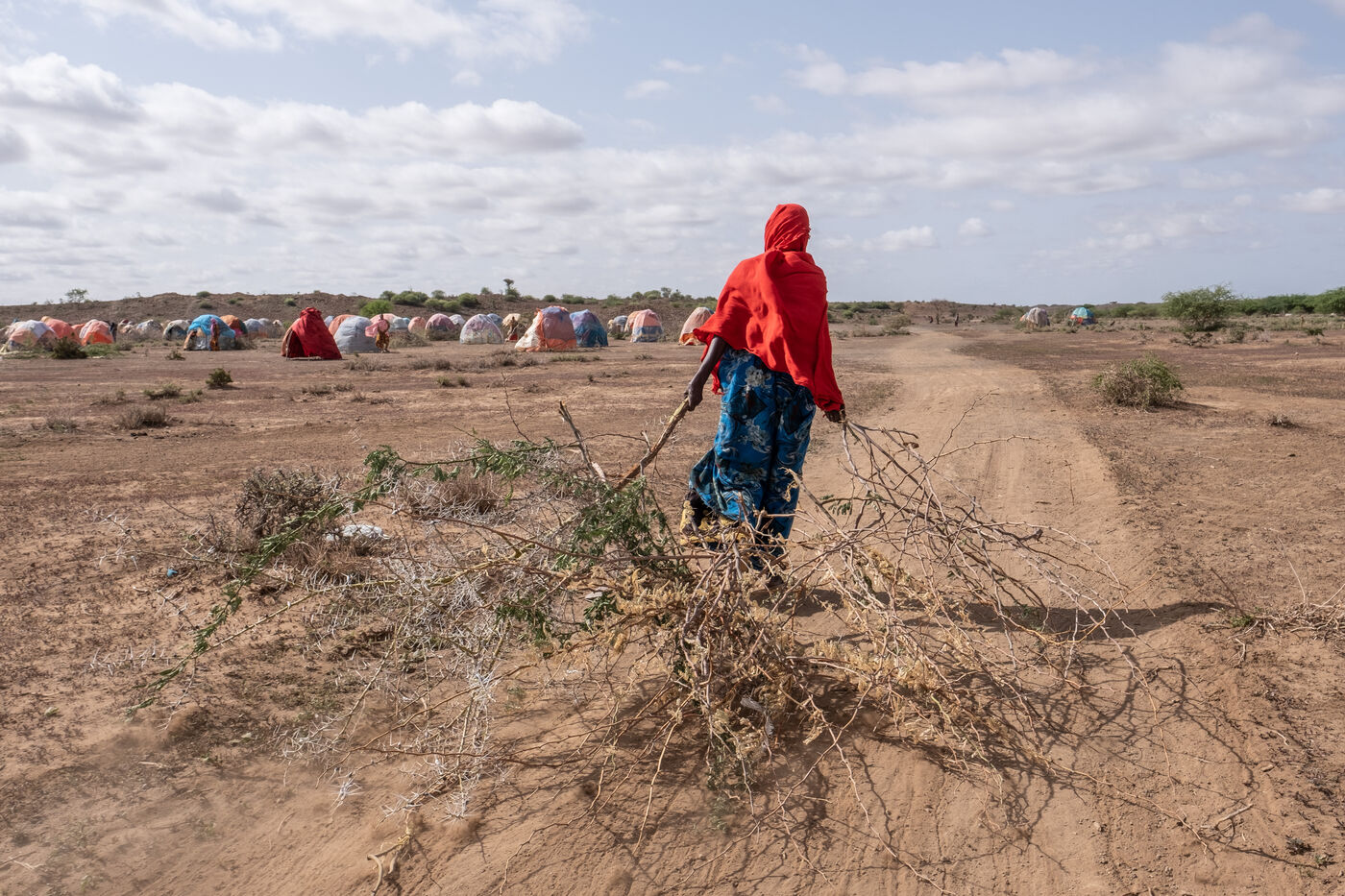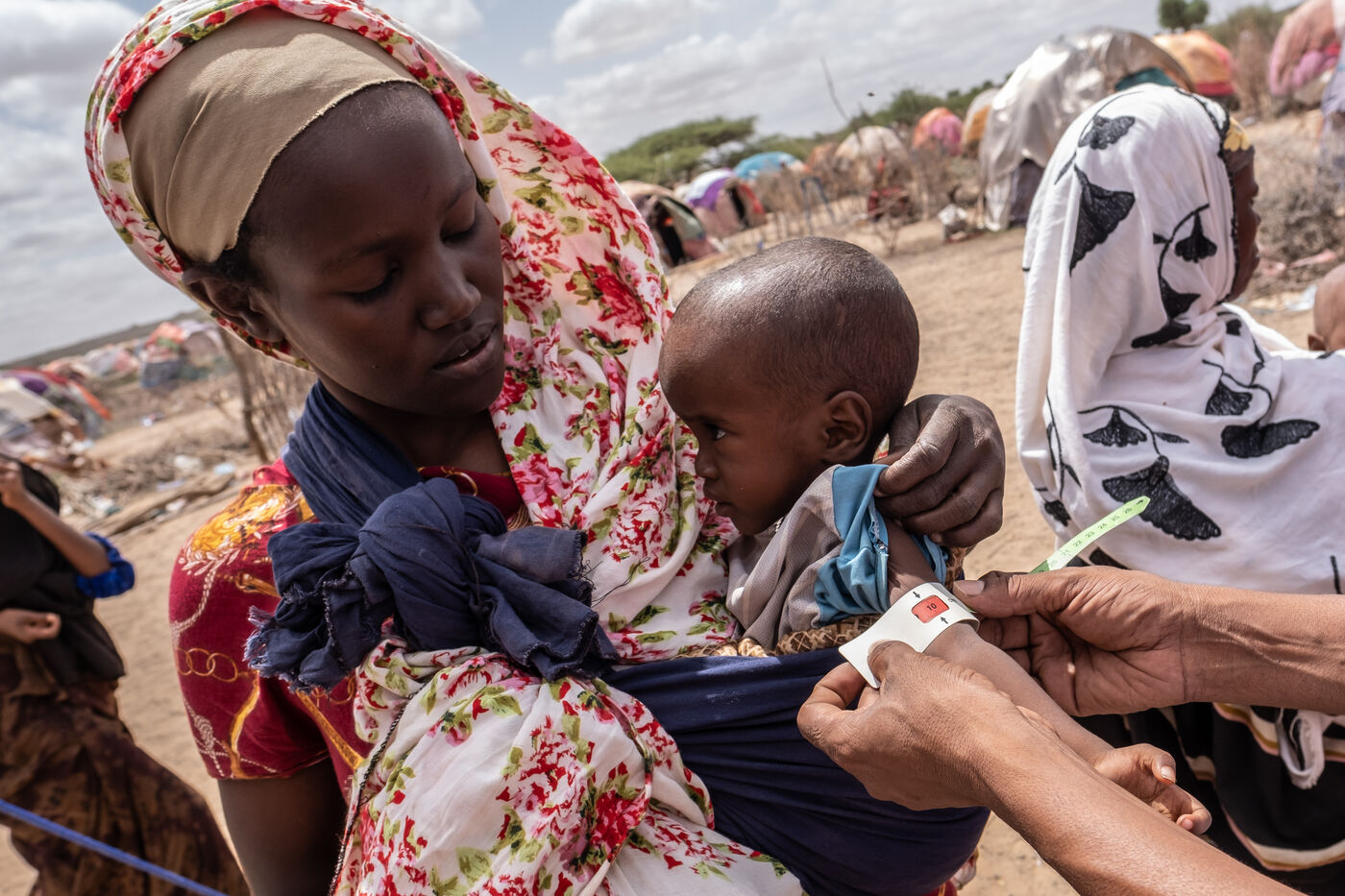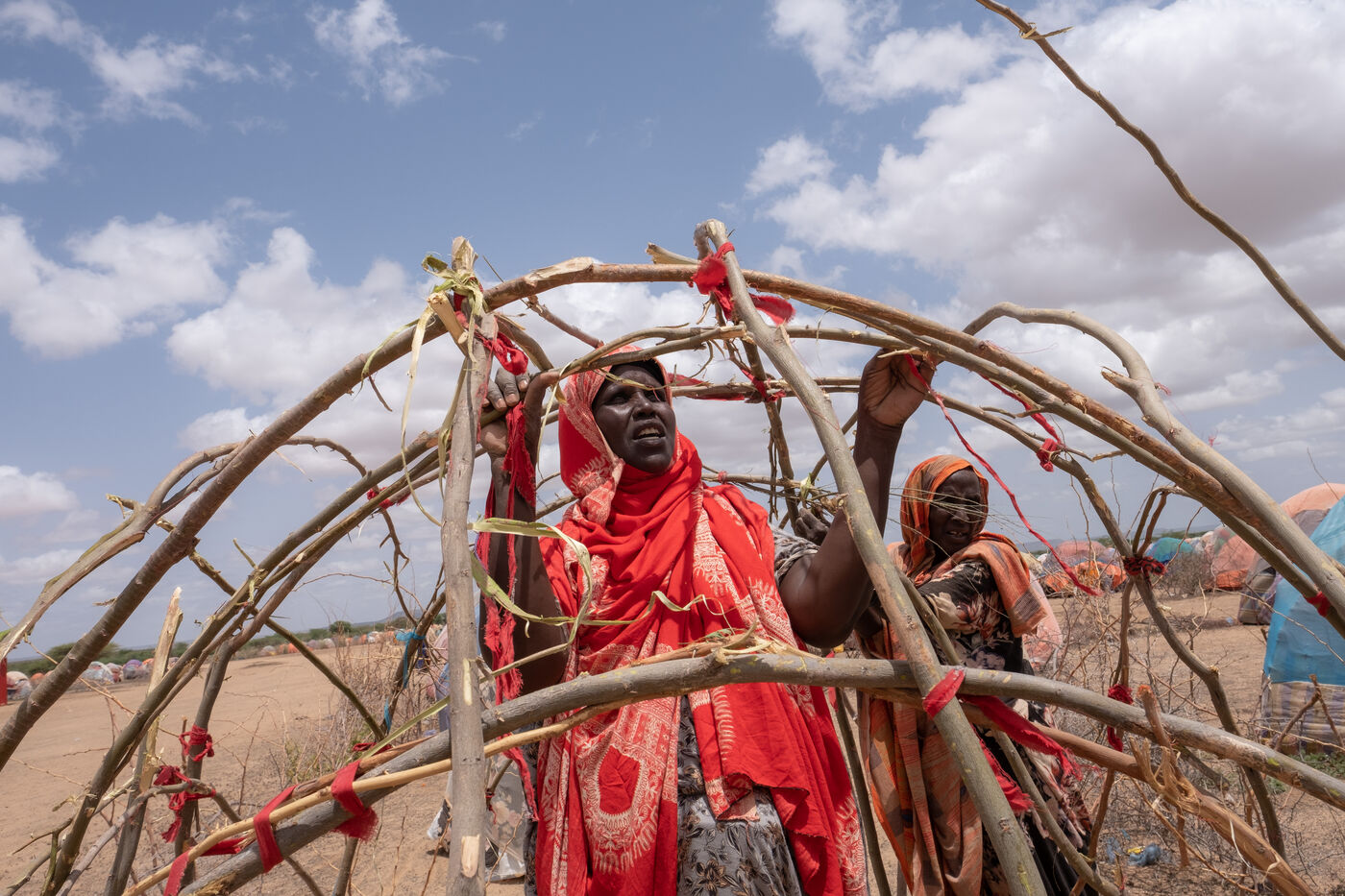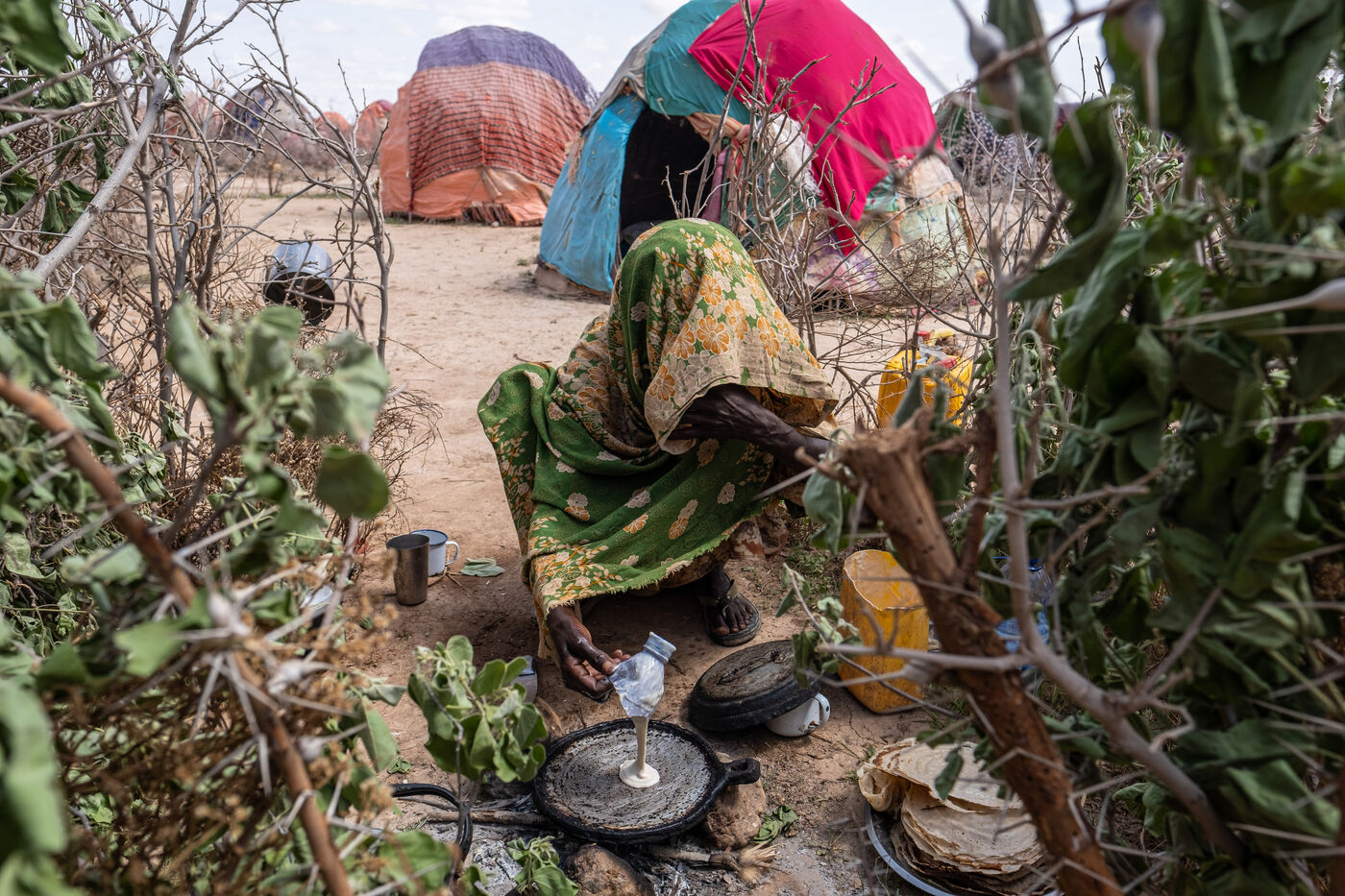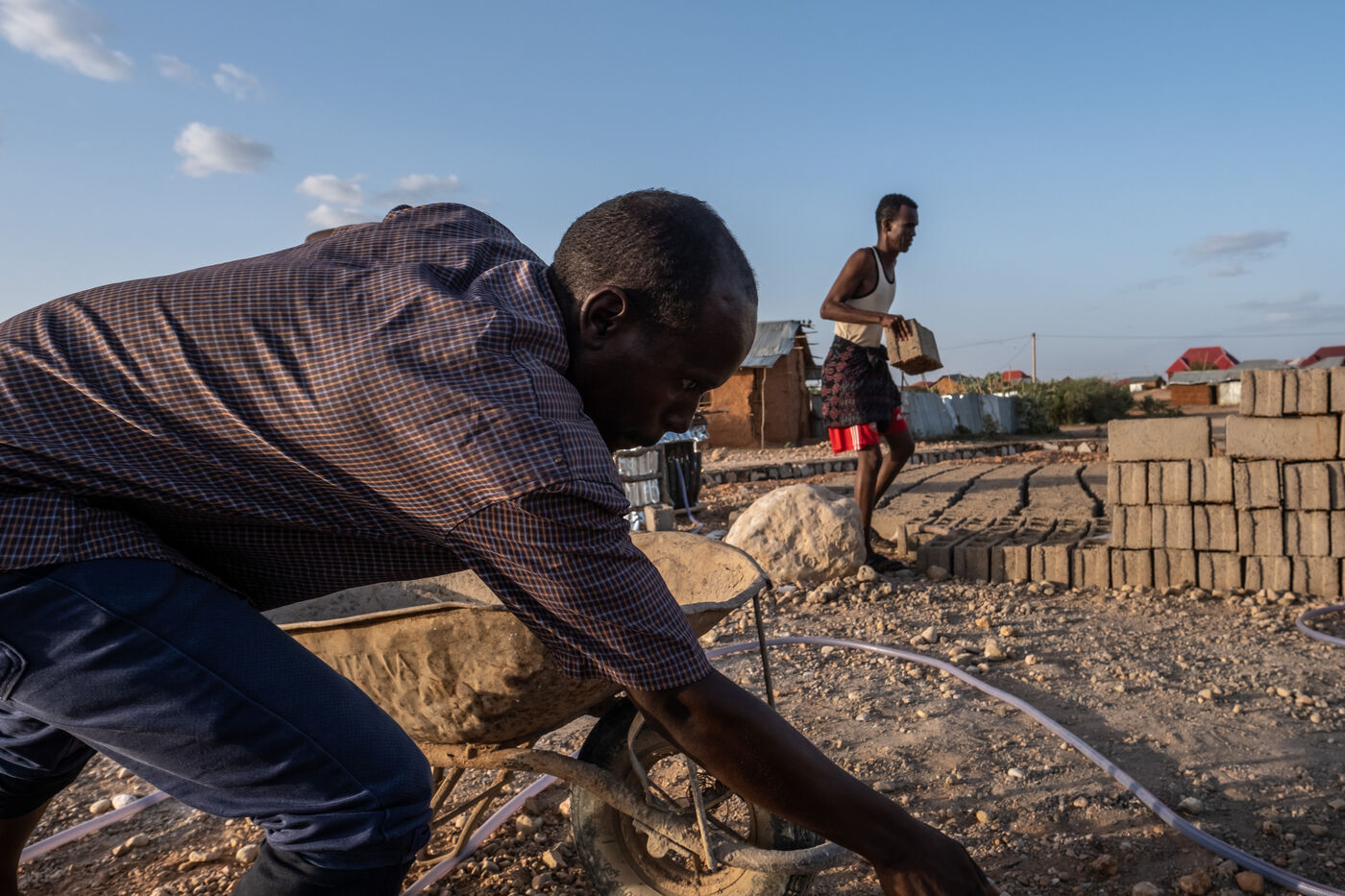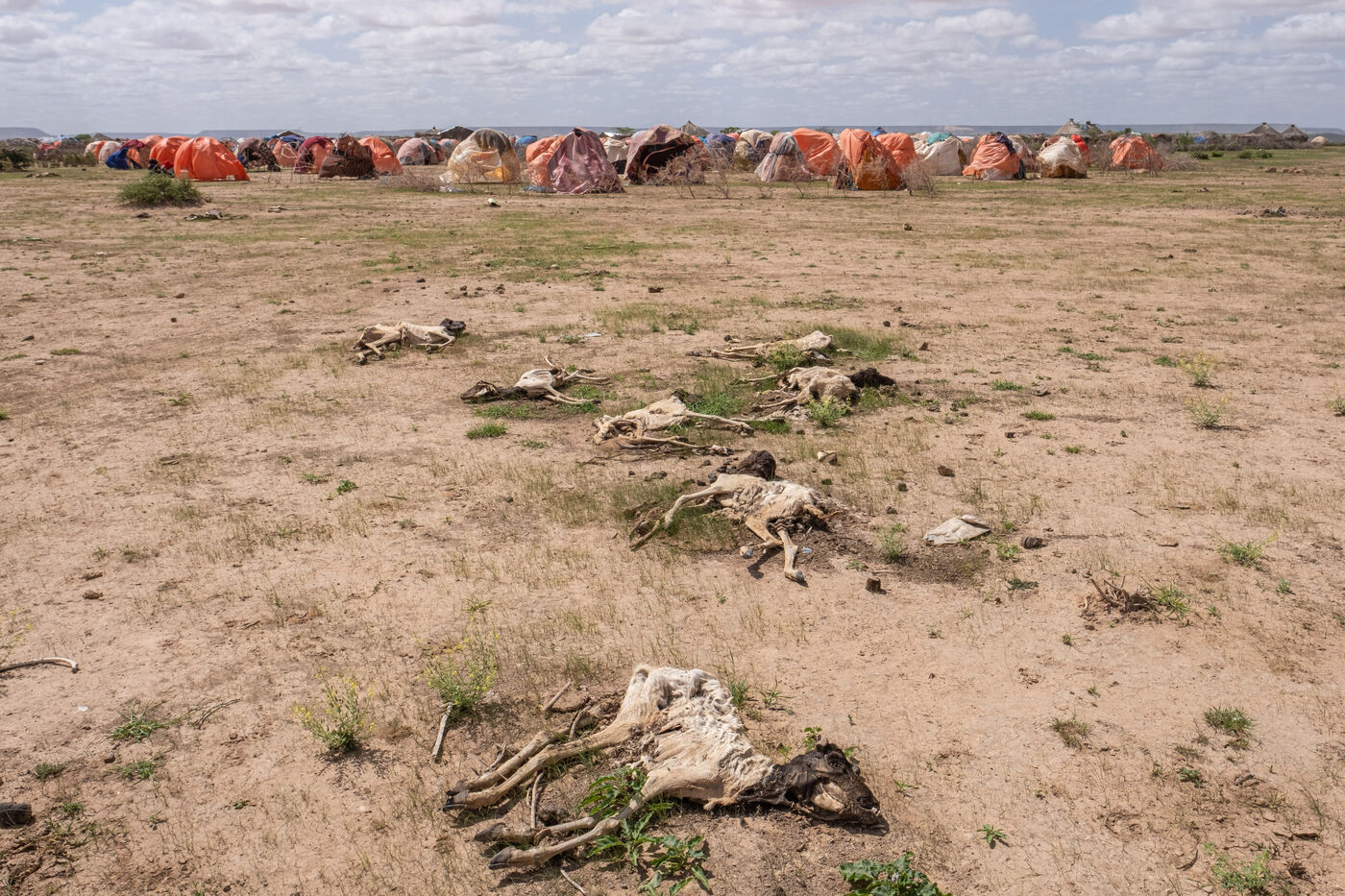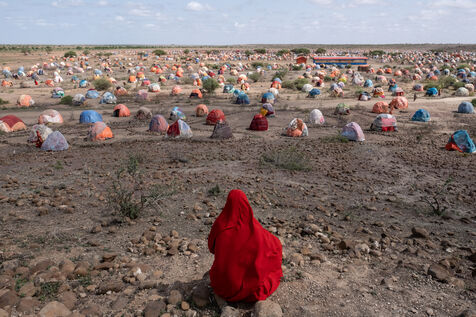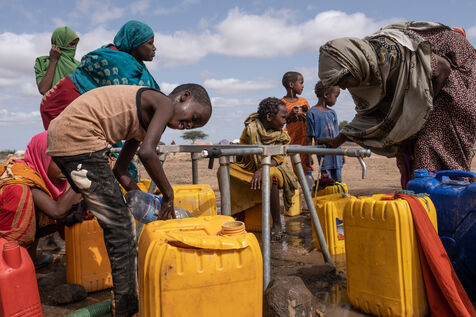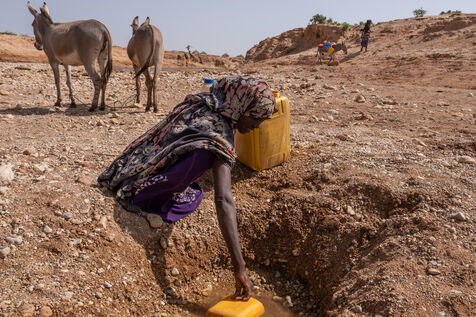Le Dernier Voyage des Nomades
Les communautés nomades de la Corne africaine ont vu ces dernières années un changement climatique de plus en plus violent et consécutif affectant complètement leur mode de vie sociale, économique et sanitaire. La sécheresse sévissant en 2022 est considérée comme la plus violente depuis 30 ans, elle vient porter un coup de grâce à ceux qui possédaient encore leurs animaux. Le pastoralisme nomade repose économiquement et socialement sur le nombre de chèvres, de vaches ou de chameaux que les familles possèdent, or la sécheresse vient de tuer plus de 3,5 millions d?animaux en 2022 par le manque de verdure et d'eau rendant la vie nomade impossible. Depuis plusieurs années, les camps de réfugiés climatiques augmentent et s'agrandissent. Le fardeau repose principalement sur les femmes qui portent cette crise à bout de bras. Beaucoup d?hommes abandonnent en effet leurs familles par honte et déshonneur n?ayant plus de bétail (vital pour la vie nomade). Les femmes se retrouvent donc isolées et viennent rejoindre les milliers de familles des camps environnant les villes. Elles doivent faire face au manque de nourriture et des eaux du sol contaminées. L?aide internationale étant également fragilisée par la guerre en Ukraine. Depuis plusieurs années, la Somalie, l?Éthiopie et le nord du Kenya voient s'éteindre la vie nomade brutalement et dans des conditions humanitaires violentes en conséquence directes du changement climatique mondial.
The Nomad's Final Journey
The nomadic communities of the Horn of Africa have seen over the last years, a repeated drought getting more severe each year. Climate change is affecting badly the communities with malnutrition, diseases and a complete disruption of their lifestyle from nomadic to sedentary refugees with no alternative. The drought in 2022 is considered the most severe in 30 years, killing most of the livestock in the region. Nomadic pastoralism is based economically and socially on the number of goats, cows or camels that families own, yet drought has just killed more than 3.5 million animals in 2022 due to lack of grass and water making nomadic life impossible. For several years, the camps of climate refugees (IDP camps) have been growing and expanding. The burden falls mainly on the women who carry this crisis with resilience by taking care of the children, finding water, food and building the nomadic domes in the camps . Many men abandon their families out of shame and dishonour because they no longer have livestock (vital for nomadic life). The women are therefore isolated and join the thousands of families in the camps surrounding small cities in Somali region. They have to face the lack of food, contaminated soil and water. International aid is also weakened by the war in Ukraine. For several years, Somalia, Ethiopia and northern Kenya have seen the slow extinction of traditional nomadic lifestyle to become a humanitarian crisis, a direct consequence of global climate change.

